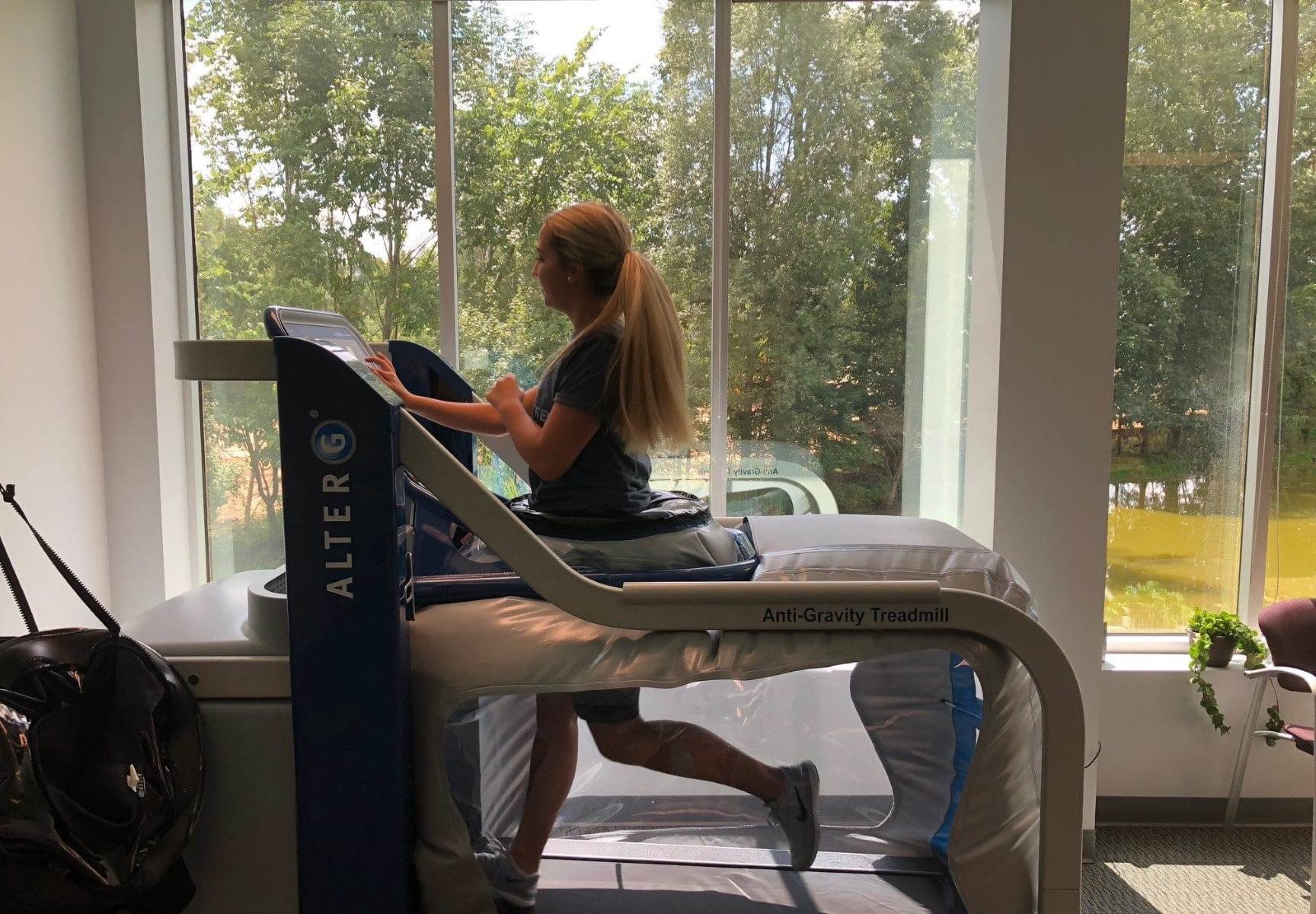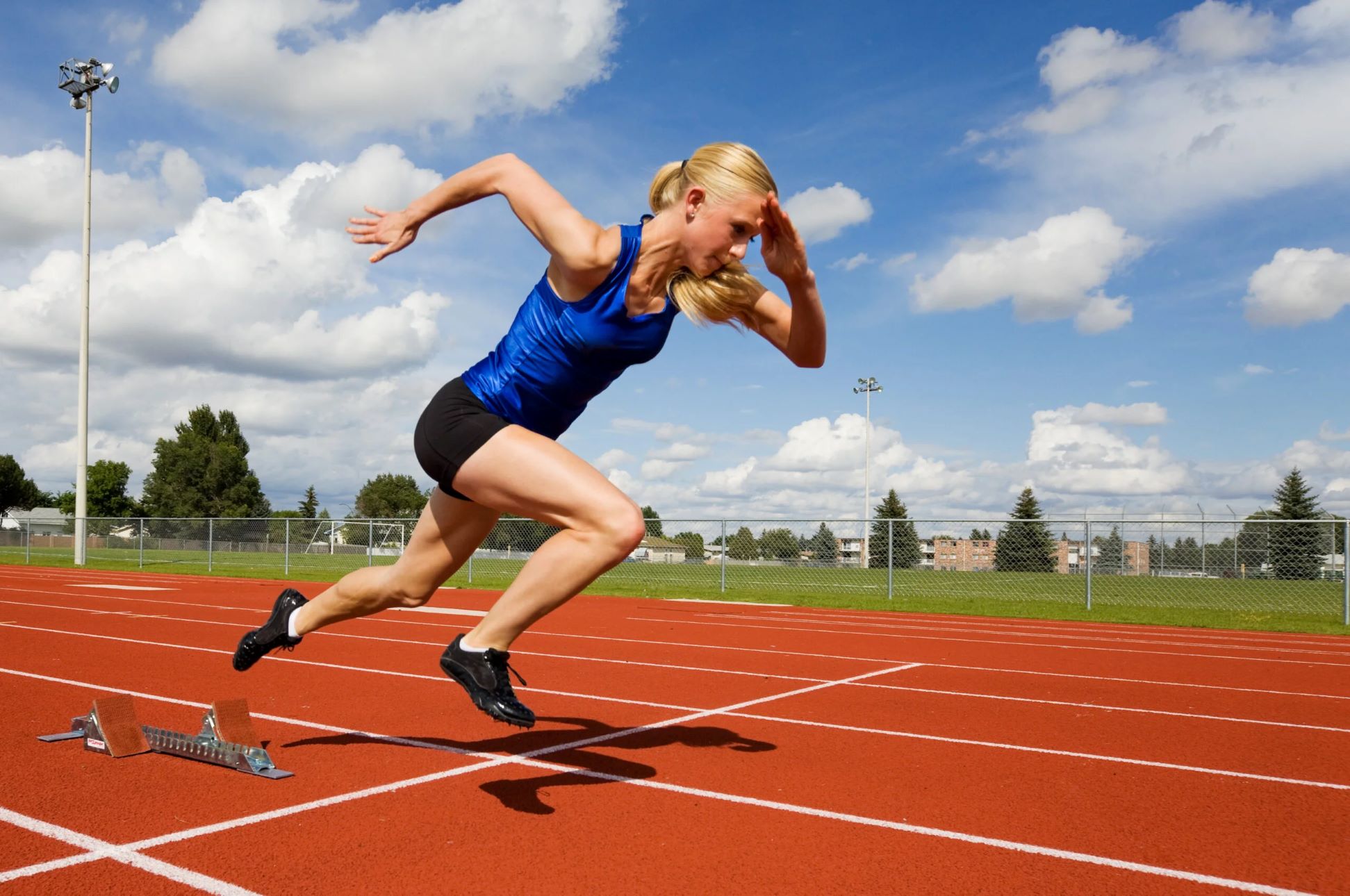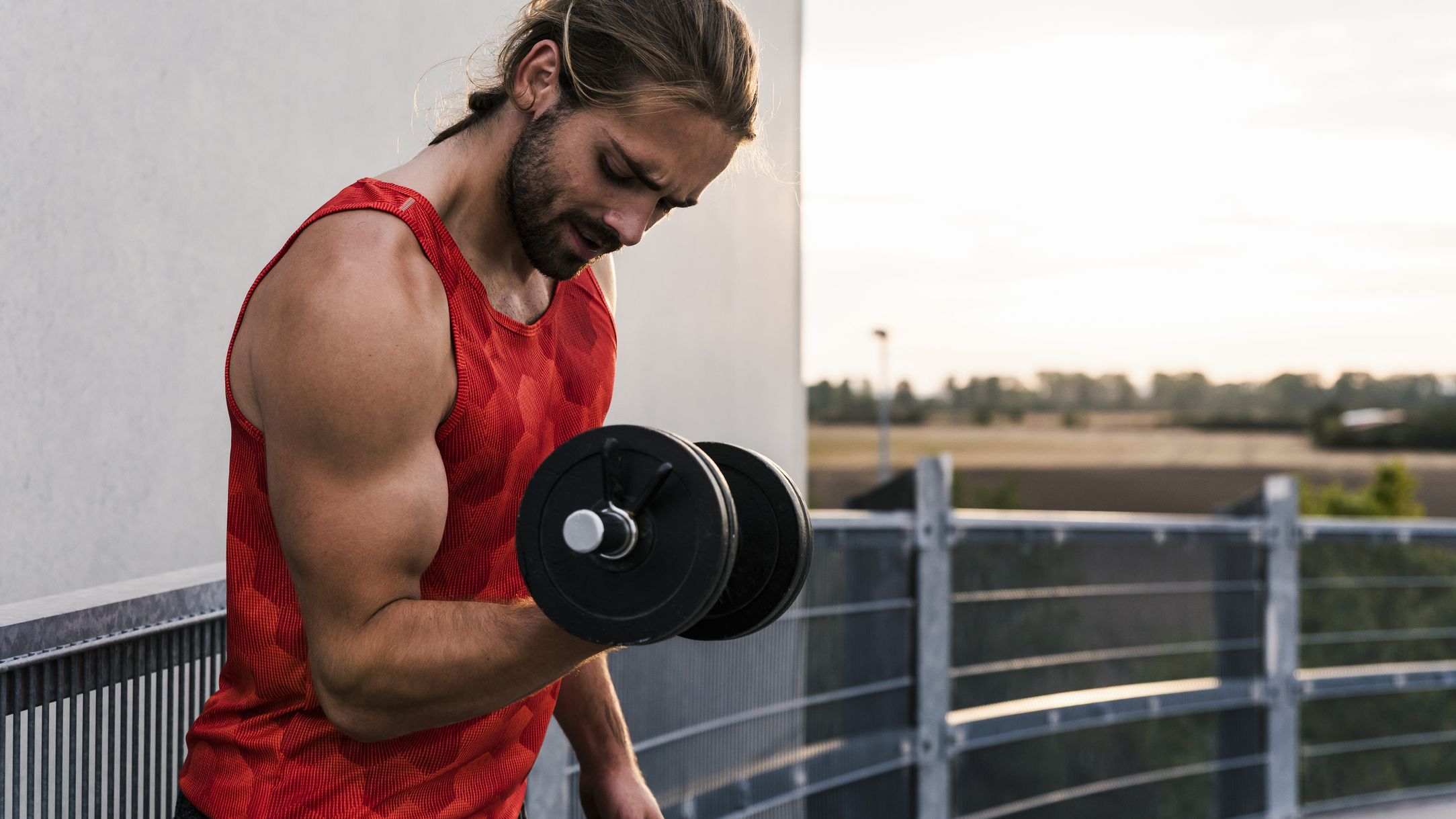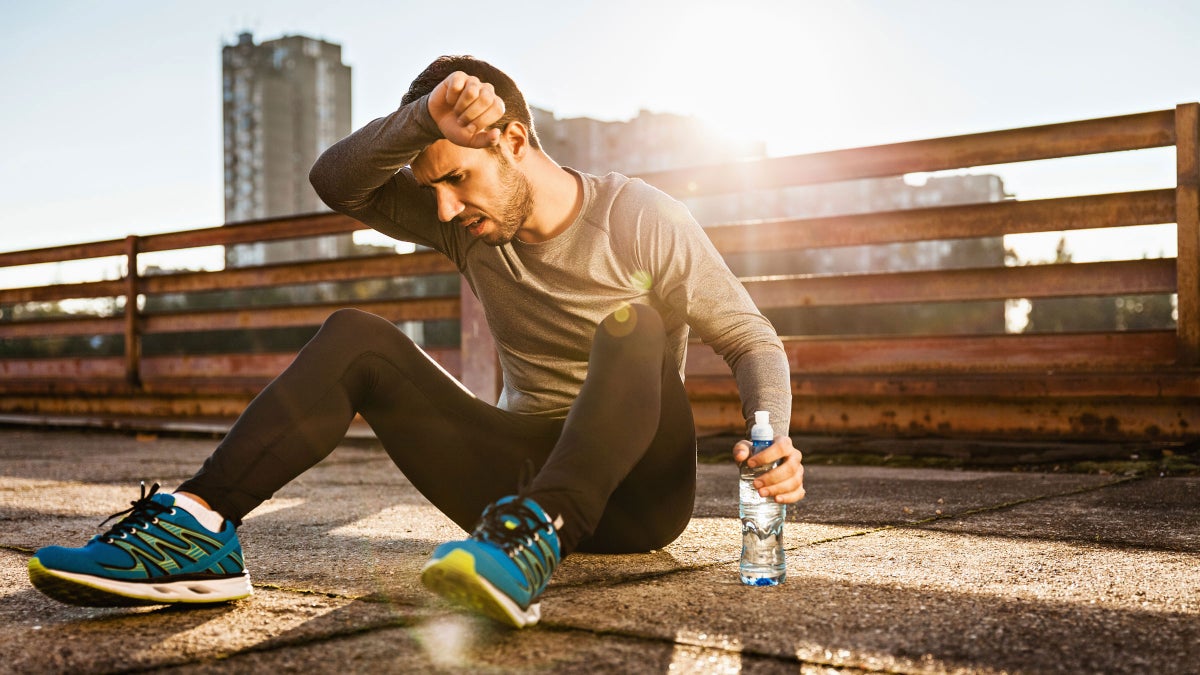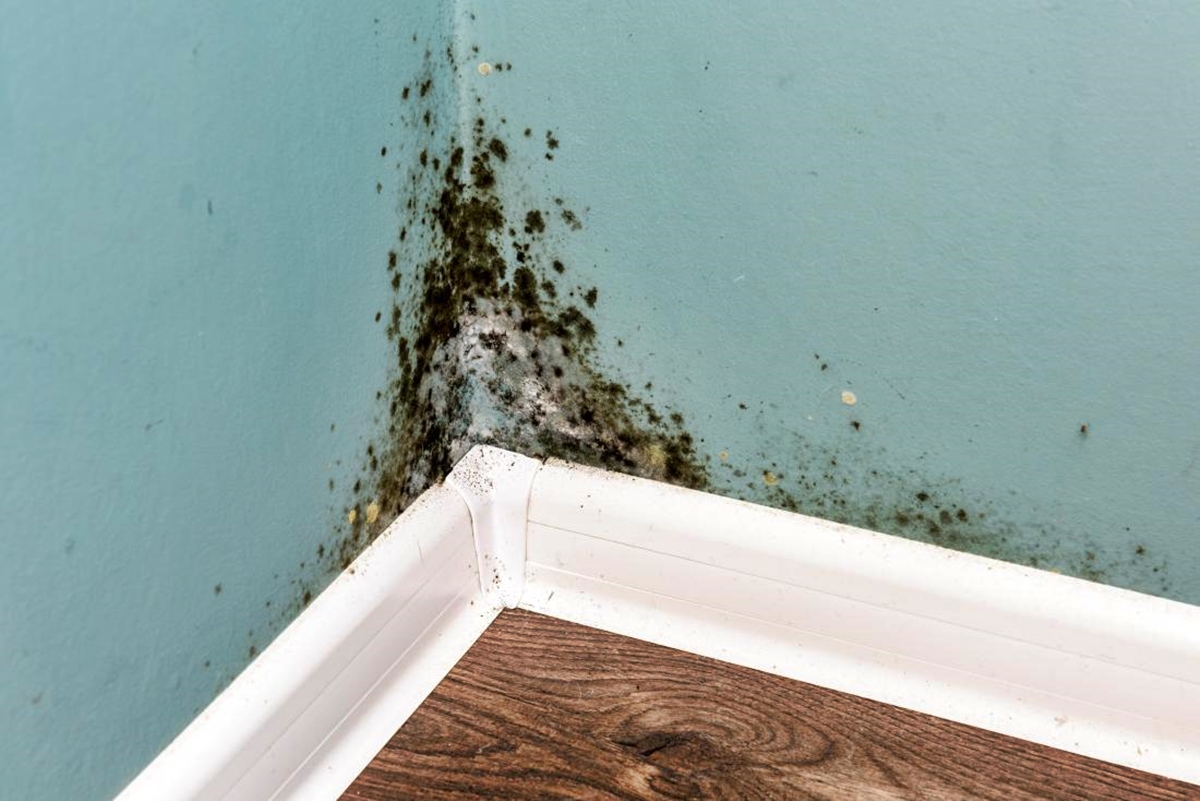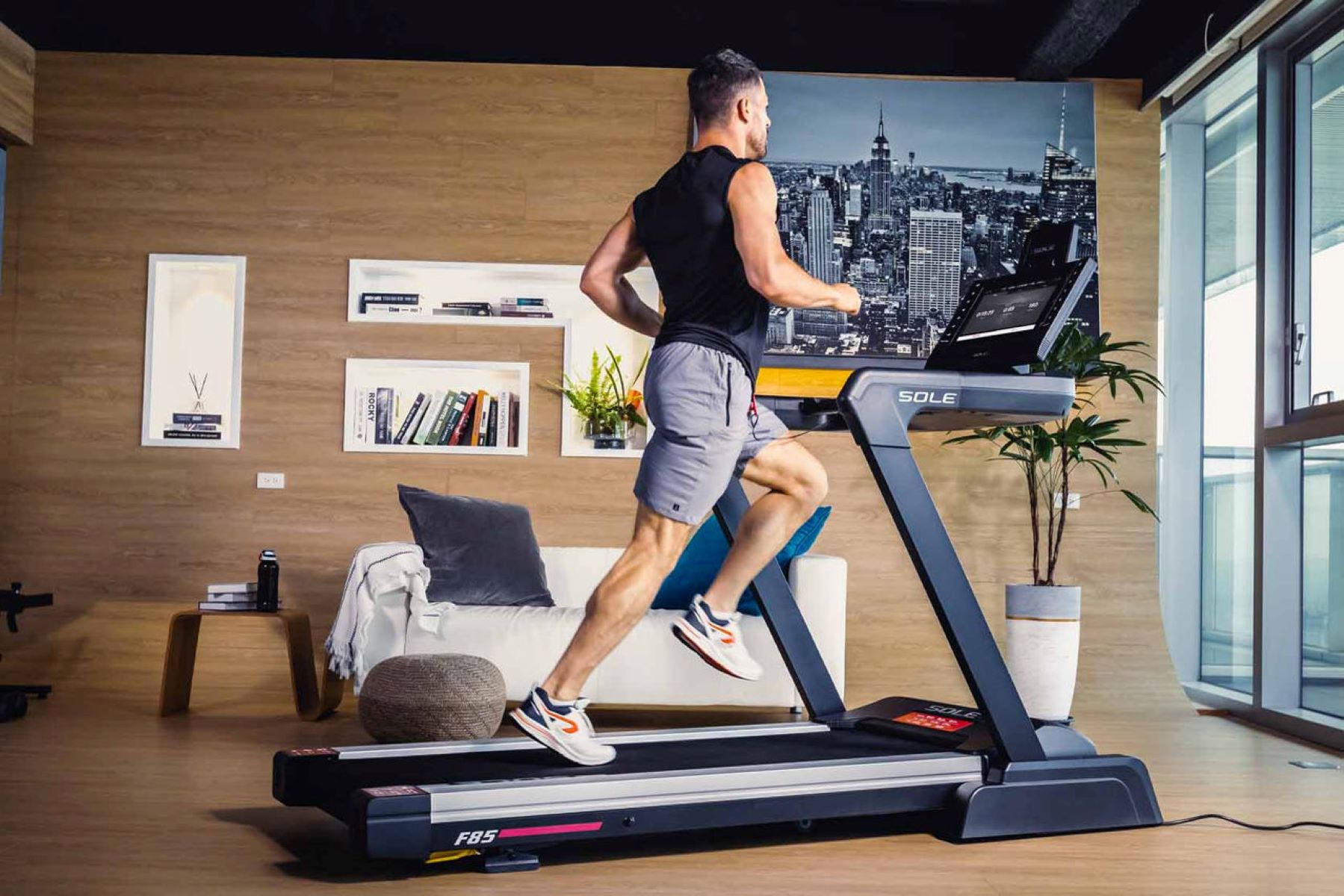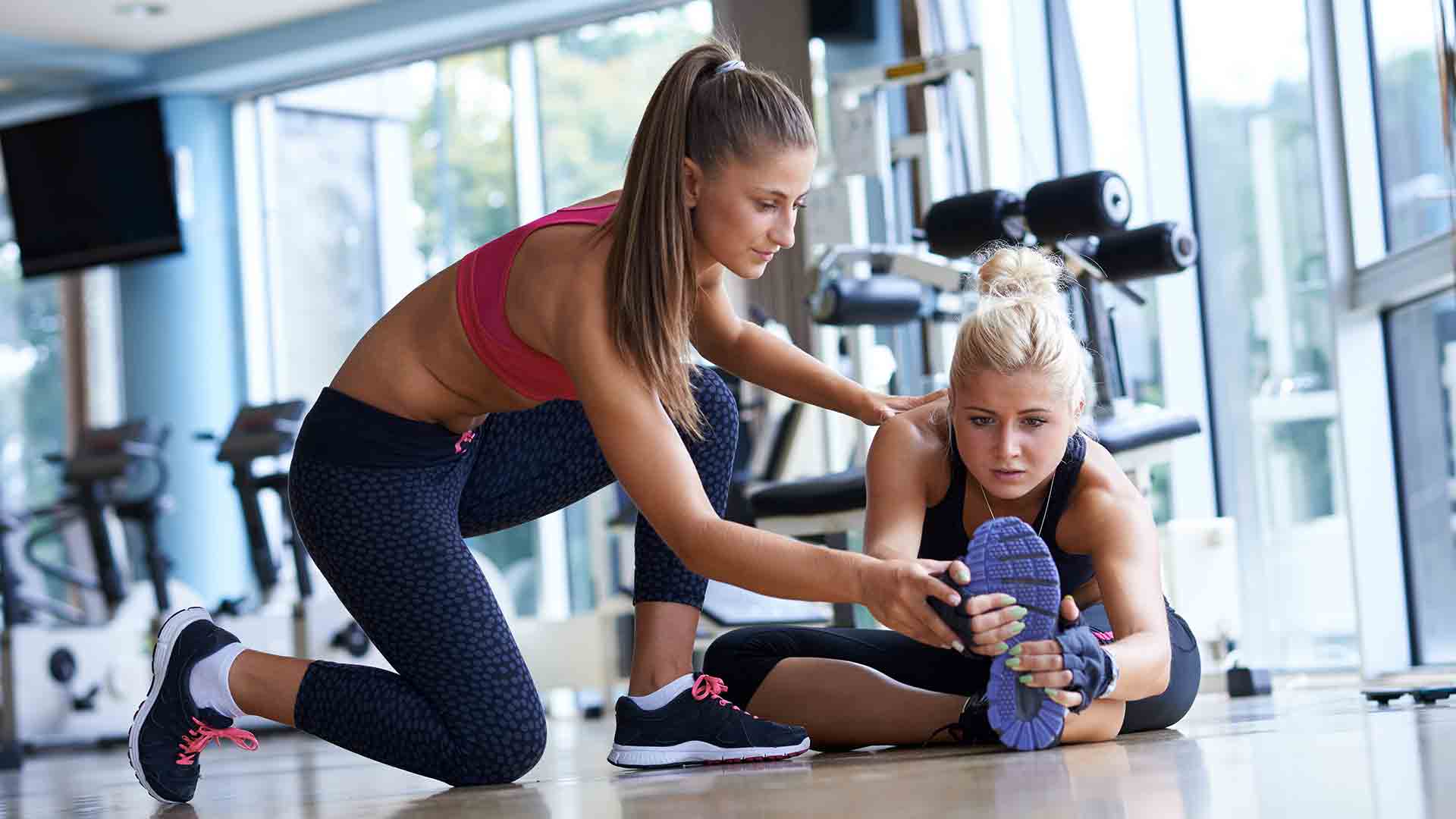Home>Misc>Featured>How Does The Environment Affect Athletic Performance
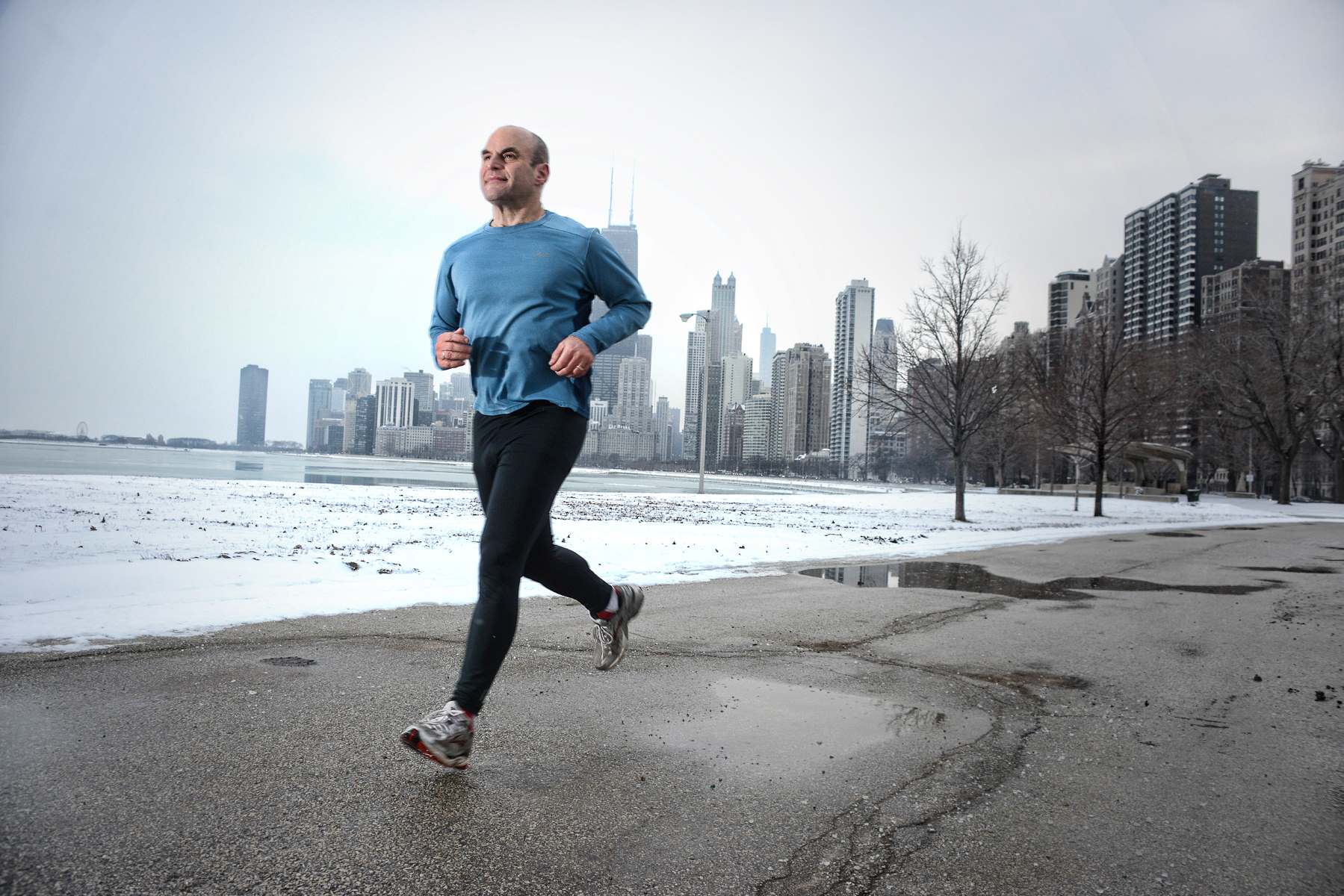

Featured
How Does The Environment Affect Athletic Performance
Modified: August 19, 2023
Discover how the environment, both outdoor and indoor, impacts athletic performance and learn about featured training techniques to optimize your results.
Introduction
Athletic performance is influenced by a multitude of factors, one of which is the environment in which athletes compete. Whether it’s temperature, humidity, altitude, air quality, noise, or light, the surroundings can have a significant impact on an athlete’s physical and mental capabilities. Understanding how these environmental factors affect athletic performance is crucial for coaches, trainers, and athletes themselves to optimize training strategies and enhance competitive outcomes.
Extreme temperatures, for instance, can profoundly impact exercise performance. Heat can cause dehydration, muscle cramps, and heat exhaustion, while cold temperatures can affect muscle function and reduce flexibility. Humidity, on the other hand, can affect how efficiently sweat evaporates and can lead to increased perceived exertion.
Altitude is another environmental factor that can impact athletic performance. As elevation increases, the air becomes thinner, resulting in reduced oxygen levels. This can lead to decreased endurance, slower recovery times, and decreased overall performance. Conversely, training at altitude can stimulate adaptations in the body, such as increased red blood cell production, which can improve performance at sea level.
Air quality is often overlooked but can have a significant impact on athletic performance. Poor air quality, caused by pollutants or allergens, can restrict airway function and decrease oxygen delivery to muscles, negatively affecting performance. Noise levels in the environment can also affect an athlete’s focus and concentration, potentially leading to decreased performance.
Light, both natural and artificial, can affect an athlete’s performance and perception. Natural light can influence circadian rhythms and sleep patterns, while artificial light can affect concentration and visual acuity. Understanding how light exposure can impact performance can help optimize training schedules and competition strategies.
In this article, we will explore the various ways in which the environment can impact athletic performance. By understanding these factors, coaches, trainers, and athletes can make informed decisions and implement strategies to mitigate any negative effects. It is essential to adapt training regimens and prepare accordingly to optimize performance and achieve desired results in different environmental conditions.
Physiological Effects of the Environment on Athletic Performance
The environment plays a crucial role in determining an athlete’s physiological responses during training or competition. Understanding these effects can help athletes and coaches develop effective strategies to maximize performance. Let’s delve into the physiological effects of various environmental factors on athletic performance.
Temperature is one of the most prominent environmental factors that impact athletic performance. In hot conditions, the body’s thermoregulatory system works hard to maintain a stable core temperature. This can result in increased sweating and dehydration, impacting an athlete’s ability to sustain intensity and endurance. Conversely, cold temperatures can constrict blood vessels, impairing blood flow to muscles and reducing flexibility. The body also expends more energy to maintain thermal homeostasis, which can lead to quicker fatigue.
Humidity, often coupled with high temperatures, can impact athletic performance by inhibiting sweat evaporation. This makes it harder for the body to dissipate heat, leading to increased perceived exertion and reduced exercise capacity. Additionally, exercising in humid conditions can increase fluid loss through sweating, further contributing to dehydration.
Altitude is another environmental factor that significantly affects athletic performance. As altitude increases, the partial pressure of oxygen decreases. This leads to a reduction in oxygen delivery to working muscles, resulting in decreased aerobic capacity and endurance. Training at high altitudes can stimulate adaptations in the body such as increased red blood cell production, which can subsequently enhance performance at lower altitudes.
Air quality can also have a profound impact on athletic performance. Poor air quality, often associated with pollutants such as particulate matter or allergens, can compromise respiratory function and oxygen uptake. This can lead to reduced exercise capacity and increased perceived exertion, making it more challenging for athletes to perform at their best.
Noise levels in the environment can create distractions and affect an athlete’s focus and concentration. Excessive noise can lead to increased levels of stress, which can impair cognitive function and decision-making abilities. This can be particularly detrimental in sports that require precise timing or quick decision-making.
Light, both natural and artificial, can influence an athlete’s performance and overall well-being. Exposure to natural light can regulate circadian rhythms, optimizing sleep patterns and enhancing recovery. On the other hand, inadequate lighting or exposure to certain types of artificial light can affect an athlete’s visual acuity and depth perception, leading to reduced performance and increased risk of injury.
Understanding the physiological effects of the environment on athletic performance is crucial for athletes and coaches. By considering and adjusting to these factors during training and competition, athletes can optimize their performance and achieve their full potential, regardless of the environmental conditions they encounter.
Temperature and Athletic Performance
Temperature is a key environmental factor that can significantly impact athletic performance. Whether it’s scorching heat or freezing cold, extreme temperatures can pose challenges for athletes and affect their physiological responses. Let’s explore how temperature can affect athletic performance and what athletes can do to mitigate its effects.
In hot and humid conditions, the body’s thermoregulatory system goes into overdrive to maintain a stable core temperature. As the body produces heat through physical exertion, it relies on mechanisms such as sweating to cool down. However, excessive sweating can lead to dehydration, electrolyte imbalances, and reduced blood volume, all of which can negatively impact performance. Heat can also impair cardiovascular function, leading to an increased heart rate and a higher perceived exertion, thus decreasing an athlete’s ability to sustain intensity and endurance.
Cold temperatures, on the other hand, can affect an athlete’s performance in different ways. The constriction of blood vessels in cold conditions reduces blood flow to the muscles. This can limit oxygen and nutrient delivery to working muscles, leading to decreased performance and an increased risk of injury. Cold muscles also have a decreased ability to contract and relax efficiently, resulting in reduced flexibility and agility.
It’s important for athletes to take several precautions when training or competing in extreme temperatures. In hot conditions, staying hydrated is crucial. Athletes must prioritize adequate fluid intake before, during, and after exercise to replace fluids lost through sweating. Wearing lightweight and breathable clothing can help dissipate heat and promote air circulation. Utilizing cooling strategies such as ice towels, cold water immersion, or misting can also aid in lowering core body temperature during breaks or timeouts.
In cold conditions, athletes should ensure proper warm-up routines to increase muscle temperature and promote blood flow. Layering clothing can help trap heat close to the body, and wearing moisture-wicking and insulating materials can keep athletes dry and warm. Extending warm-up periods and incorporating dynamic movements can also contribute to improving muscle function and flexibility in colder temperatures.
Adjusting training schedules to avoid exercising during peak heat or cold times of the day can also be beneficial. Finding indoor training facilities with controlled temperatures can provide a more suitable environment for athletes to train effectively and safely. Additionally, monitoring weather forecasts and being aware of heat or cold-related illnesses, such as heatstroke or hypothermia, is crucial for athlete safety.
By understanding the effects of temperature on athletic performance and implementing appropriate strategies, athletes can adapt and optimize their performance in various temperature conditions. Whether it’s hot or cold, proper preparation and precautions can help athletes overcome the challenges posed by temperature and achieve their best results.
Humidity and Athletic Performance
Humidity is a significant environmental factor that can impact athletic performance, particularly when combined with high temperatures. Humidity refers to the amount of moisture present in the air, and it plays a crucial role in how well the body can cool itself through sweat evaporation. Let’s explore the effects of humidity on athletic performance and strategies to mitigate its impact.
High humidity makes it more difficult for sweat to evaporate from the surface of the skin. This can result in reduced evaporative cooling, as sweat cannot effectively carry away heat from the body. As a result, athletes can experience increased core body temperature, higher heart rate, and a greater perceived exertion during exercise in humid conditions. This can lead to decreased endurance, diminished performance, and an increased risk of heat-related illnesses.
Exercising in high humidity can potentially lead to dehydration due to the increased fluid loss through sweat. The body needs to work harder to thermoregulate, which requires additional energy expenditure. As a result, athletes may experience quicker fatigue and reduced exercise capacity compared to when exercising in less humid conditions.
Hydration plays a critical role in mitigating the effects of humidity on athletic performance. Athletes should prioritize staying well-hydrated before, during, and after exercise in humid conditions. Consuming fluids containing electrolytes can help replace lost minerals and maintain proper hydration levels. Monitoring urine color is also useful in ensuring adequate hydration—clear or light-colored urine indicates good hydration levels, while dark urine suggests dehydration.
Athletes can also employ various cooling strategies to cope with humidity. Taking regular breaks in shaded areas or cooled environments can help lower core body temperature. Utilizing cold towels, ice packs, or even cold water immersion during breaks can aid in dissipating heat and providing relief from the effects of humidity on the body.
Incorporating appropriate clothing and equipment choices can also aid in managing the impact of humidity. Wearing lightweight, breathable, and moisture-wicking fabrics can help enhance evaporation and promote air circulation, allowing for better heat dissipation. Additionally, using sweat-absorbing wristbands and headbands can prevent sweat from dripping into the eyes and impairing vision during exercise.
Adjusting training schedules to times of the day when humidity is relatively lower can be beneficial. Early mornings or evenings are generally cooler and less humid, providing a more optimal environment for training or competition. Exploring indoor training facilities with controlled humidity levels can also offer a suitable alternative when outdoor conditions are unfavorable.
By understanding the effects of humidity on athletic performance and implementing strategies to mitigate its impact, athletes can optimize their performance under humid conditions. Staying hydrated, employing cooling strategies, and using appropriate clothing can help athletes overcome the challenges posed by humidity and perform at their best.
Altitude and Athletic Performance
Altitude, or elevation above sea level, is a unique environmental factor that can significantly impact athletic performance. As athletes ascend to higher altitudes, the air becomes thinner, leading to decreased oxygen availability. Understanding the effects of altitude on the body is crucial for athletes who train or compete in high-altitude environments. Let’s explore how altitude impacts athletic performance and strategies athletes can employ to adapt to these conditions.
As altitude increases, the atmospheric pressure decreases, resulting in reduced oxygen partial pressure. This decrease in oxygen availability affects the body’s ability to deliver oxygen to working muscles, leading to lower aerobic capacity and endurance. Athletes often experience increased heart rate, decreased exercise capacity, and a higher perceived exertion at higher altitudes, as the body tries to compensate for the reduced oxygen levels.
Training or competing at high altitudes can present challenges for athletes from lower altitudes. The body needs time to acclimatize and adapt to the lower oxygen levels. In response to altitude, the body increases its production of red blood cells, which helps improve oxygen-carrying capacity. This process, known as altitude acclimatization, can take several weeks to fully develop and optimize performance.
While altitude acclimatization can enhance performance at higher altitudes, it’s essential to note that it does not completely offset the physiological limitations imposed by reduced oxygen availability. Athletes may still experience decreased performance compared to sea-level conditions. However, acclimatization can minimize the negative effects and improve an athlete’s ability to compete at high altitudes.
Training at altitude can have additional benefits when returning to sea level. The adaptations gained during altitude exposure, such as increased red blood cell production, can enhance performance in oxygen-rich environments. This phenomenon, known as the “altitude training effect,” gives athletes a potential advantage when competing at lower altitudes after training at higher altitudes.
For athletes traveling to high-altitude destinations for training or competition, a gradual ascent and proper hydration are crucial. This allows the body to acclimatize gradually, reducing the risk of altitude sickness and optimizing performance. Adequate fluid intake becomes even more crucial in high-altitude environments to compensate for increased respiratory water loss and maintain hydration.
Sports that require high-intensity efforts may require modification of training programs at altitude. The reduced oxygen availability can limit the intensity that an athlete can sustain during workouts. Adjusting training intensities and focusing on aerobic capacity development can be more effective in high-altitude environments.
In some cases, athletes use altitude tents or simulators to partially replicate the effects of high-altitude training. These devices create a low-oxygen environment, allowing athletes to expose themselves to reduced oxygen levels while maintaining their regular training routines. This technique can be beneficial for athletes who do not have access to high-altitude training locations.
By understanding the effects of altitude on athletic performance and implementing appropriate strategies, athletes can optimize their training and performance in high-altitude environments. Adequate acclimatization, proper hydration, and adjustments to training intensities can all contribute to overcoming the challenges posed by altitude and achieving optimal results.
Air Quality and Athletic Performance
Air quality is an often overlooked factor that can have a significant impact on athletic performance. The quality of the air we breathe can be influenced by various factors, such as pollutants, allergens, and environmental conditions. Understanding how air quality affects athletes is crucial for optimizing performance and ensuring athlete well-being. Let’s explore the effects of air quality on athletic performance and strategies to mitigate its impact.
Poor air quality, often associated with pollutants such as particulate matter, ozone, and nitrogen dioxide, can have detrimental effects on respiratory function. When athletes exercise in environments with high levels of pollutants, these substances can enter the airways and compromise lung function. This leads to decreased oxygen uptake, reduced exercise capacity, and increased respiratory symptoms, such as coughing and wheezing.
Allergens are another common factor impacting air quality and athletic performance. Pollens, mold spores, and other allergens can trigger respiratory allergies and asthma in athletes, leading to airway inflammation, breathing difficulties, and reduced exercise performance.
Exposure to poor air quality can also contribute to oxidative stress. Air pollution contains reactive oxygen species that can damage cells and tissues, impairing physiological processes and negatively impacting performance. The body’s antioxidant defense mechanisms may become overwhelmed in polluted environments, further exacerbating the negative effects on athletic performance.
To mitigate the effects of poor air quality on athletic performance, measures can be taken both on an individual and environmental level. Athletes can monitor air quality indexes and adjust training schedules accordingly. Avoiding outdoor training during times and locations with high pollution levels can help reduce exposure to harmful pollutants.
When training or competing in areas with poor air quality, athletes should consider wearing masks specifically designed to filter out pollutants. These masks can provide some protection and reduce the inhalation of harmful particles and allergens. However, it’s important to choose masks that allow for adequate airflow to prevent increased breathing resistance and discomfort.
Improving indoor air quality is also essential for athletes who train primarily indoors. Ensuring proper ventilation systems, reducing indoor pollution sources, and regularly cleaning air filters can all contribute to creating a healthier training environment with better air quality.
Educating athletes about the potential hazards of poor air quality and promoting awareness of environmental factors can empower them to make informed decisions. Athletes should be encouraged to communicate any respiratory symptoms they experience to their coaches or medical professionals to ensure appropriate management and treatment.
Efforts to improve air quality at a societal level, such as reducing industrial emissions and promoting clean energy sources, can also have a positive impact on athletic performance. Collaboration between sports organizations, environmental agencies, and policymakers can help create healthier environments for athletes to train and compete.
By understanding the effects of air quality on athletic performance and implementing strategies to mitigate its impact, athletes can optimize their performance and minimize the risk of respiratory issues. Prioritizing clean air and taking appropriate measures to address air quality concerns are essential for both short-term athletic success and long-term athlete well-being.
Noise and Athletic Performance
Noise is an environmental factor that can significantly impact athletic performance, particularly in sports that require focus, concentration, and precise execution. The presence of excessive or distracting noise can have detrimental effects on an athlete’s performance and overall mental state. Let’s explore the effects of noise on athletic performance and strategies to mitigate its impact.
Noise can create distractions, disrupt concentration, and hinder mental focus. In sports that require precise timing, such as archery or golf, even a slight distraction caused by noise can lead to a missed shot or an errant swing. Athletes may struggle to maintain their focus, resulting in reduced accuracy, slower reaction times, and decreased overall performance.
Exposure to high levels of noise can also increase stress levels in athletes. Elevated stress levels can lead to heightened muscle tension, impaired decision-making abilities, and decreased motor coordination. In sports that demand fine motor skills and precise movements, such as gymnastics or figure skating, this can significantly impact performance.
Noise can be especially detrimental in team sports, where effective communication and coordination among teammates are crucial. Excessive background noise can make it challenging for athletes to hear instructions, calls, or signals from teammates or coaches. This can lead to miscommunication, confusion, and disrupted teamwork.
Implementing strategies to mitigate the effects of noise on athletic performance is essential. One approach is to create a quiet and controlled training environment, such as soundproofing training facilities or using quieter equipment. This can help athletes develop the ability to focus and concentrate under less distracting conditions, preparing them for noisy competitive environments.
Utilizing noise-canceling headphones or earplugs during practice or competition can also help reduce external noise distractions. These devices can help create a more controlled auditory environment and allow athletes to better focus on their performance.
Developing mental strategies to cope with noise distractions can also be beneficial. Athletes can work with sports psychologists to learn techniques such as visualization, mindfulness, or concentration exercises. These strategies can help athletes maintain focus and block out external noise distractions during competition.
In team sports, effective communication becomes even more critical when noise levels are high. Teams can implement visual or non-verbal signals to communicate on the field or court. Clear communication protocols and practice scenarios in noisy environments can help athletes overcome the challenges of noise interference and maintain effective team coordination.
When competing in noisy environments, athletes can use pre-performance routines to mentally prepare themselves. These routines can include techniques such as deep breathing, positive self-talk, or listening to calming music to help create a focused mental state before competing.
Efforts to minimize excessive noise in sports venues or event settings, such as using sound barriers or implementing noise-reduction technologies, can also contribute to creating a more favorable auditory environment for athletes.
By understanding the effects of noise on athletic performance and implementing strategies to mitigate its impact, athletes can optimize their focus, concentration, and overall performance. Creating the right training environment, utilizing equipment or devices to reduce noise distractions, and developing mental strategies can all help athletes overcome the challenges posed by noise and achieve their best results.
Light and Athletic Performance
Light, both natural and artificial, plays a significant role in athletic performance. The type and amount of light that athletes are exposed to can have various effects on their physiological and psychological responses. Understanding how light influences performance can help athletes optimize their training and competition strategies. Let’s explore the effects of light on athletic performance and strategies to harness its benefits.
Natural light, particularly sunlight, can have positive effects on an athlete’s performance and overall well-being. Exposure to natural light helps regulate circadian rhythms, which are essential for optimal sleep-wake cycles and hormone regulation. A well-aligned circadian rhythm can contribute to improved sleep quality, enhanced recovery, and overall better performance.
On the other hand, inadequate exposure to natural light, such as in indoor training environments or during travel, can disrupt circadian rhythms and result in reduced alertness, mood disturbances, and impaired performance. Athletes should strive to incorporate sufficient natural light exposure into their daily routine, especially in the morning and during the day, to maintain a healthy circadian rhythm.
Artificial light, such as that emitted by indoor lighting or electronic devices, can also influence athletic performance. Inadequate or inappropriate lighting conditions can affect visual acuity and depth perception, leading to reduced performance and an increased risk of injury. Athletes should ensure proper lighting in training facilities and competition venues to optimize visual performance.
Light exposure can affect an athlete’s mental state and cognitive function. Bright, cool-white light can increase alertness and focus, while warm-white light can have a calming effect. Athletes can strategically utilize different lighting conditions to enhance their mental state during training or competition. For instance, using bright lighting during warm-ups and high-speed activities can promote alertness and readiness, while utilizing softer lighting during relaxation or recovery periods can aid in relaxation and stress reduction.
Light exposure timing can also impact an athlete’s performance. Morning exposure to bright light helps regulate the body’s internal clock and promotes wakefulness and alertness throughout the day. Conversely, exposure to bright light in the evening can suppress the release of melatonin, a hormone that promotes sleep, thus interfering with sleep quality and subsequent performance.
Athletes who travel across time zones can use strategic light exposure to help adjust their circadian rhythms. Carefully timed exposure to bright light or avoidance of bright light at certain times of the day can help athletes minimize the effects of jet lag and adapt to a new time zone more effectively.
Understanding the effects of light on athletic performance allows athletes to optimize their training schedules and create appropriate lighting environments for different activities. Integrating natural light exposure, ensuring proper lighting conditions, and strategically using lighting to influence mental state can all contribute to improved performance and well-being.
Awareness of light-related factors and collaboration with lighting professionals can help athletes and sports organizations optimize training and competition environments. By harnessing the benefits of light, athletes can enhance their performance, mental focus, and overall athletic experience.
Conclusion
The environment in which athletes train and compete has a profound impact on their performance. Whether it’s temperature, humidity, altitude, air quality, noise, or light, these environmental factors can significantly influence an athlete’s physiological and psychological responses. Understanding how these factors affect athletic performance is paramount for athletes, coaches, and trainers to optimize training strategies and achieve optimal results.
Temperature and humidity can impact an athlete’s thermoregulatory system, affecting endurance, cardiovascular function, and overall exercise capacity. Adequate hydration, appropriate clothing choices, and adjusting training schedules can help athletes cope with extreme temperatures and humidity levels.
Altitude poses unique challenges, as the reduction in oxygen availability can decrease aerobic capacity and endurance. Acclimatization, gradual ascent, and adjustments to training intensities can help athletes adapt to high-altitude environments and optimize performance.
Poor air quality can compromise respiratory function and overall performance. Monitoring air quality, wearing masks, and creating cleaner indoor training environments can help minimize the negative effects of pollution and allergens.
Noise can disrupt focus, concentration, and teamwork in athletic activities. Utilizing quiet training environments, implementing communication protocols, and employing mental strategies can help athletes overcome noise distractions and perform at their best.
Light, both natural and artificial, can influence circadian rhythm, visual acuity, and mental state. Athletes should prioritize exposure to natural light, ensure appropriate lighting conditions, and strategically use lighting to optimize performance and well-being.
By understanding the effects of these environmental factors and implementing appropriate strategies, athletes can adapt to different conditions, optimize their performance, and reduce the risk of negative impacts on their health. Collaboration between athletes, coaches, trainers, sports organizations, and experts in various fields can contribute to creating training environments that enhance performance and support athlete well-being.
As the knowledge and understanding of the effects of the environment on athletic performance continue to evolve, it is crucial to prioritize the well-being and performance of athletes. By optimizing training strategies, adapting to environmental conditions, and implementing the appropriate measures, athletes can reach their full potential and excel in their respective sports.

